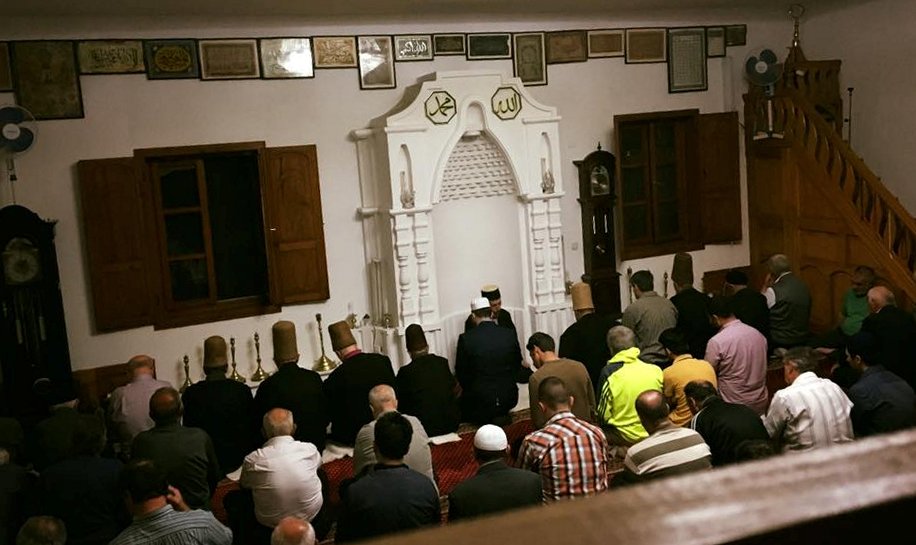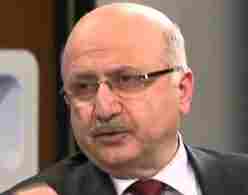ARTICLES ON MAWLANA IN THE RUSSIAN ENCYCLOPAEDIAS OF THE SOVIET PERIOD – Dmitri MIKULSKI
III. ULUSLARARASI MEVLÂNA KONGRESİ
ARTICLES ON MAWLANA RUMI IN THE RUSSIAN ENCYCLOPAEDIAS OF THE SOVIET PERIOD
Prof. Dr. Dmitri MIKULSKI*
The problem of the perception of one culture by the other is nowdays one of the major for the Humanitues. This phenomenon is caused by the furhter development of intercultural contacts in the framework of the universal prosses, which is called the globalisation. However our field of academic studies, the Oriental ones, have originally possessed the sitrive to investigate a certain alien culture.
Nevertheless, as it appeares to me, a feature like that, characteristic Oriental studies, is possessed by it only in the circumstances of academic freedom, the absence of ideological framework, that might narrow a scholar’s outlook.
Unfortunately in the recent past of our national or other words, Russian and Soviet, there existed at any rate officially such obsticles, that were sometimes subtantially distorting one or other phenomenon of a certain oriental culture under study.
In this connections it is of certain interest to monotor the information, that culture of the Muslim Orient, as is Mawlana Djalal al-Din Rumi, for articls in encyclopaedias are an important primery source, that is under the disposal of a considerable number of readers.
So if one begins ab ovo, it is necessary to point out, that in one of the first Russian encyclopaedias, that is “The Encyclopaedical Dictionnary of Brockhaus and Ephron” l, that was being published at the break of the XIX -XX centuries before the Communist revolution of 1917, the article, dedicated to Mawlana Rumi is absent.
The same cocerns the first edition of the Larger Soviet Encyclopaedia, that was being published in the twenties – the fourties of the 20 century2.
Presumabely it is caused by the fact, that neither the Russian pre-revolutionary, nor the Soviet Oriental Studies of the early period had yet managed to appreciate the cultural importance of Mawlana.
The first encyclopaedical article on Mawlana Rumi appeared in the second edition of the Larger Soviet Encyclopaedia, that was being published in the fifties of the 20 century3. The article is anonimous, but there is ground to believe, that it belongs to the well-known scholar of that epoch Professor I. S. Braginski (11205-1989).
The next encyclopardical article appeared in the Smaller Soviet Encyclopaedia4. At our disposal there is the third edition, while the two previous ones (the 10 -volumed 1928-1931 and the 11-volumed 1933-1940) are unavailable.
The third, according to the time schedule, article on Mawlana Rumi is to be found in the Brief Litterary Encyclopaedia, that was being published in the sixties – the seventies of the 20 century5. This time the name of the author of the article is definetely known. It is a prominent specialist on the problems of the Tajik literature Professor Rasul Hadi-zade. Born 1928 in Samarkand, he has worked all his life-time at the Institute of languge and literature of the Academy of Sciences of Tadjikistan and published some 250 scholarly works.
The fourth available article on Mawlana Rumi has been printed in the third edition of the Larger Soviet Encyclopaedia, that was published during the seventies of the 20 century and belongs to the same R. Hadi-zade6.
Thus at our disposal there are four texts out of Soviet encyclopaedias, dedicated to Mawlana Rumi. In the following study they will be related to as articles, published in a certain year.
In accordance with the nature of encyclopaedical texts the articles under study consist of a number of common rubrics.
The first of these rubrics is the general characteristic of Mawlana Rumi as a phenomenon of culture.
In the 1955 article it is said, that Mawlana Rumi is “a Tajik and Persian poet, the preacher of pantheistic and Sufi ideas”.
In the 1960 article Rumi is characterised as “a Persian and Tajik poet, who was a Sufi”.
The 1971 article points out, that Rumi was “a Persian-language mystical poet”.
While the 1977 article describes Mawlana as “a Persian-language Sufi poet”.
The second rubric contains a brief biographi of Mawlana Rumi, that consists of several points -the birth ar Balkh, wanderings, the arrival to Konya and the years, spent there. This rubric is excluded out of the 1960 (the Smaller Soviet Encyclopaedia) article.
The third rubric is dedicated to the characteristic of the main works of Mawlana Rumi.
In the 1955 article it is said, that “the main work of Rumi is “Masnawi Macnawi”, which consists of six books and icludes a large number of parabolas and fables, borrowed from the oral folklore of the Iranin-language peoples {the Tajiks and the Persians). Rumi used to preach mystical ideas and to call for uncompleining humbleness in the face of the Fate and the violence. His other work “Divan” is also filled with almost mysticism, with the thoughts on the perishness of the earthy existance. Still there are to be found echoes of the popular protest agains cruelty and violence, the reflection of the humanistic popular aspirations. Rumi’s language is clear and simple, the parabolas and fables are entertaining. His lyrical poems are melodical and musical. [Rumi] also wrote a number of philosophical works, such as ” Fihi ma Fih” and other”.
In the 1960 article the works of Mawlana is charaterised in the following way: “His moralizing “Edifying double verses” (thus was translated the title “Masnawi Macnawi” -D. M.) are filled with mysticism and call to the submissiom in the face of the Fate. [This work] contains many fiction stories and parabolas. The lyrical ghazals bear a melodical character and the perfection of the poetical form. In the lyrics of Rumi are to be found echoes of the popular protest agians cruelty and violence”.
The 1971 and 1977 articles, that were both prepaired by R. Hadi-zade, posses an identical text, that represents the third rubric. It reads: ” The ghazals and odes by Rumi, gathered into a divan, represent the climax of the Sufi mystical poetry. The poem “Mesnewi” (sic) enjoys a far more degree of popularity… The poem is filled with narrative folklore materials (parabolas, fables, small stories). “Mesnewi” is a precious collection of the oral folklore of the 13 century”.
The fourth rubric reflects the general assesement of the creative activities of Mawlana Rumi.
In the 1955 article the following phrase may be comsidered as such: “The son of Rumi Sultan Weled is the founder of the medieval Turkish poetry”.
In the 1960 article the fourth rubric is absent.
The fourth rubric of the 1971 article reads: “There exists a vast amount of scholarly literature on Rumi and his poetry both in Europe and the Orient”.
In the 1977 article the fourth rubric is represented by the following phrase: “The creative activities of Rumi has essentially influenced the development of the literatures of the Orient”.
So this is the amount of the materials, that relate to Mawlana Rumi in the articles, dedicated to him and his creative activities in Soviet encyclopaedias. A general outlook over the analysed texts shows several main points.
The Sufi character of Mawlana’s creative activities was depicted scareasly.
Mawlana’s works are evaluated mainly from the view-point of the notorious social struggle.
Practically is ignored the connection of Mawlana Rumi’s creative carrera to the Turkish lirerature. He is totally granted to the disposal of the Persian and Tajik litature. Such a stand is caused by the historically complex relations between Russia and Turkey. Due to this reason the Russian and Soviet scholars, who were working in the field of Oriental studies, used to take mostly reserved and even unobjective positions towards the history of the Turkish culture. This fact should be taken into consideration by those, who work in this field nowdays.
* Institut of Oriental Studies of the Russian Academy of Sciences Moscow
l Enzyklopeditcheskiy slovar… Izdateli F. A. Brockhaus (Leipzig) and I.. A.. Ephron (Sanfkt-Peterburg). T.I – XI. Sankt-Peterburg, 18120-11204.
2 Bolshaya Sovetskaya Entzyklopediya. T. 1 – 55. Moskva, 1929 -1947.
3 Bolshaya Sovetskaya Entzyklopediya. Vtoroye izdaniye. T. 1 -51. [ Moskva], 1950 —1958, Ibid. Vol. 37,1955, p. 321.
4 Malaya Sovetskaya Entzyklopediya. Tretye izdaniye. T. 1 -10. Moskva, 1958-1960. Ibid. Vol.. 8, p. 21
5 Kratkaya literaturnaya entzyklopediya. T.. 1 – 9. Moskva, 1968 – 1978. Ibid. Vol 6, 19 71, p. 422 -423.
6 Bolshaya Sovetskaya Entzyklopediya. Tretye jzdaniye, T. 1 – 30. Moskva, 1970 22,1977, p. 363.









